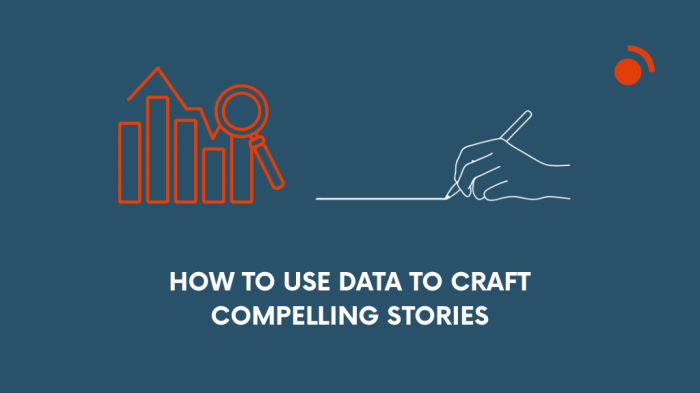Using Data to Craft Compelling Stories

In today’s digital communication landscape, effectively using data is no longer optional it is essential. However, simply presenting numbers is insufficient. To make a true impact, data must be woven into a compelling narrative. When implemented properly, data storytelling helps audiences comprehend, connect with, and act on the information presented. This article will explore how to transform raw data into powerful stories that resonate and support the objectives of communication professionals in various industries.
What Is Data Storytelling?
Data storytelling is the process of combining data, narrative, and visuals to convey a clear and meaningful message. It goes beyond merely displaying figures; it explains the significance of those figures and their relevance. By integrating narrative techniques and visuals, data storytelling enhances understanding, retention, and decision-making, especially in the context of marketing campaigns where understanding consumer behavior in real-time can significantly impact strategy.
There are three core components of a data story:
- Data – The facts and figures that serve as the foundation of your message.
- Narrative – The structure that provides context and meaning to the data.
- Visuals – Graphs, charts, and infographics that simplify complex data for easier interpretation.
When these elements are combined effectively, they help the audience grasp complex information and retain the insights shared, making data-driven decisions easier.
Why Data Storytelling Works: The Power of Narrative
- Improved Understanding
Many individuals find raw data abstract and challenging to interpret. A narrative provides context, turning numbers into insights. For example, instead of stating that website traffic increased by 35%, you might explain how a new marketing campaign, launched in January, contributed to this change. Presenting data in a timeline or cause-and-effect structure helps audiences establish connections and understand the data’s implications, particularly in real-time adjustments to marketing campaigns.
- Building Trust
Trust is a fundamental component of effective communication, especially when dealing with factual information. Transparently presenting your data and providing an explanation of its origins enhances credibility. A well-crafted story supported by accurate data is more persuasive than relying on opinions alone. In the case of real-time analytics, transparency about how the data was gathered and what it means can build audience trust in your communication efforts.
- Boosted Retention
People tend to remember stories more easily than statistics. When a graph is paired with a narrative explaining the human side of the numbers, such as how rising food prices impact a student’s monthly budget, it increases the likelihood that the audience will recall both the story and the underlying data. This human-centered approach is key for data-driven marketing campaigns and content aimed at engagement, ensuring the message resonates long after the presentation.
- Clearer Decision-Making
Data presented within a narrative framework is more accessible and actionable. Whether the objective is to raise awareness, inform policy, or drive sales, guiding your audience through the meaning behind the numbers helps them take the next step. In real-time marketing campaigns, this can lead to more informed decisions and stronger outcomes, whether optimizing content for specific target groups or adjusting strategies based on customer feedback.
What Makes a Good Data Story?
A successful data story is clear, relevant, and well-structured. It doesn’t merely present data; it explains it, making the insights actionable. The following elements are crucial for creating an effective data story:
- Clarity Over Complexity
Avoid unnecessary technical language. Use plain language that resonates with a broader audience. Readers generally prefer clear and straightforward explanations over jargon, especially when interpreting complex data analysis. This ensures the story remains accessible, even to those without a background in data science.
- A Defined Focus
A strong data story has a central message. Avoid overwhelming the audience with extraneous details. Whether you are highlighting a trend, comparing data points, or explaining a shift in behavior, maintain a clear focus on the most important takeaway. In the context of marketing campaigns, this focus could be the key results or behaviors you want the audience to act on.
- Relevant Data
Only include data that directly supports your narrative. It is more effective to present one or two key statistics than to inundate your audience with a long list of numbers. Select data points that help explain the “why” behind a situation, not just the “what.” For instance, in analyzing the success of a marketing campaign, include the data that shows how customer interactions or conversions increased after a specific change or promotion.
- Context is Essential
Providing context is vital for ensuring that your audience understands the data’s origin, what it measures, and how it relates to real-world scenarios. Including comparisons, such as changes over time or across different groups, can help clarify the meaning and relevance of the data, especially when discussing marketing campaigns or trends that evolve over time.
How to Structure a Data Story
- Start With a Question or Problem
Every effective story begins with a reason to engage. Introduce the issue or question that your data will address. For instance:
- “What factors are driving the decline in online shopping?”
- “How did the recent social media campaign affect consumer behavior?”
Framing your data story with a problem gives the audience a clear focus and sets the stage for the narrative.
- Present the Data
Use simple, clear visuals like bar charts, line graphs, or infographics to display the most important data points. Ensure that each visual is labeled clearly, and include the source and date of the data whenever relevant. These visuals become essential tools in conveying the results of your marketing campaigns or other real-time data analysis.
- Explain the Significance
This is the core of your data story. Don’t just present the data, explain what it means, why it matters, and how it could impact future actions. This is where your expertise as a communicator is vital. By providing insights, you help the audience move beyond the numbers and understand their implications. In real-time data analysis, it’s crucial to connect those numbers with actionable insights that guide decision-making.
- Conclude With Action or Insight
End your data story by reinforcing the main message or suggesting a course of action. Whether it’s changing behavior, making a policy recommendation, or asking further questions, the conclusion should provide direction for the next step. For instance, after analyzing the results of a marketing campaign, you might suggest specific adjustments to optimize future campaigns or strategies.
Choosing the Right Visuals for Your Data Story
Visual content plays a crucial role in making a data story more engaging and accessible. However, it is important to use visuals thoughtfully. Here are some best practices:
- Use simple charts: Bar and line charts are typically the easiest for audiences to interpret.
- Avoid clutter: Too much detail in a visual can distract from the core message. Keep visuals clean and focused.
- Label clearly: Always ensure that your visuals are properly labeled so that your audience knows exactly what they are viewing.
- Use color intentionally: Highlight important data points, but avoid overwhelming your audience with excessive color.
- Ensure accessibility: Include alt text for images, and choose high-contrast colors to ensure readability for all audiences.
Additionally, consider making your data story mobile-responsive and screen-reader friendly to expand your reach and improve accessibility.
Optimizing Your Data Story for Search
To make your data-driven story more discoverable online, it is crucial to apply search engine optimization (SEO) techniques. SEO helps not only improve your content’s visibility but also signals to search engines that your material is relevant and clear. Here are key recommendations for optimizing your data story:
- Use relevant keywords naturally.
- Craft descriptive titles and meta descriptions. Incorporate the primary keyword in your title, such as “Using Data to Craft Compelling Stories,” and ensure that the meta description clearly communicates the focus of the article.
- Utilize header tags (H2, H3) to organize your content and improve readability for both users and search engines.
- Include alt text for all visuals. This ensures that your visuals are indexed properly and accessible to all users.
- Link to credible sources. Citing reputable sources when referencing data or research not only increases trust but also improves the authority of your content.
- Update your content regularly to keep examples and statistics current. SEO thrives on fresh, relevant content.
SEO is most effective when balanced with clear, engaging writing. Focus on answering real questions, providing actionable insights, and ensuring the value of your data is easily understood.
Final Thoughts
Data storytelling is an essential skill in today’s digital communication environment. Whether you are working on a website, managing social media, or preparing reports, the ability to transform raw data into compelling narratives will make your message stand out. Strong data stories go beyond presenting numbers — they provide context and meaning that engage audiences, encourage understanding, and inspire action.
Mastering the art of data storytelling can significantly enhance your communication efforts. By combining accurate data, thoughtful interpretation, and effective visuals, you can create content that informs, engages, and drives results.
If you are interested in learning how to turn data into compelling narratives, consider our Master’s in Multilingual Web Communication. The program equips you with the tools to master data analysis, storytelling, and digital communication strategies, empowering you to create impactful content in real-time for various industries.
Written by Luanna Kerr
Other articles
-

Discover our online Master in digital communication
-

How creative designer learned to make beautiful digital technology
-

Is augmented reality the marketing tool of the future?
-

Future Technological Advances in Voice Technology for Virtual Personal Assistants through Natural Language Processing
-

Motion Design Definition and Advantages


